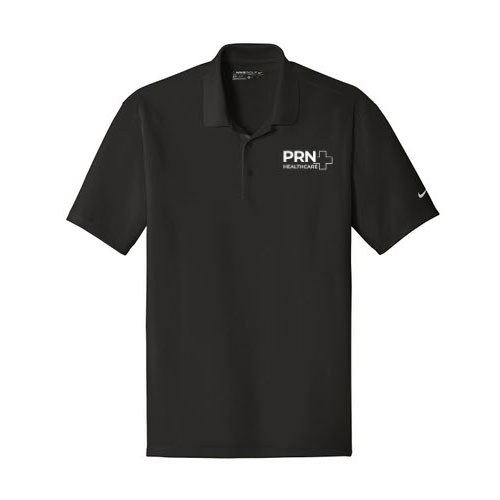Table of Contents
Why a good resume is essential when applying for a new Hospice RN job
A well-crafted and effective resume is necessary to secure a position as a hospice RN. Your resume serves as your first introduction to an employer and is a tool to showcase your professional qualifications, skills, and experience. A compelling resume is your initial point of contact with a potential employer, and it should be written to make a lasting impression.
Your resume should be detailed, yet concise, and should highlight your nursing degree (BSN), certified hospice and palliative nurse (CHPN) registration, and any other specialized training. It is used to effectively communicate your proficiency in hospice patient care and to differentiate you from a field of competitive candidates.
We will provide a few important tips and an example of a template resume to help improve your resume/CV and secure a job interview.
How long should the hospice RN job resume be and what information should be included?
A hospice RN’s resume should be comprehensive but concise. You should provide enough information to showcase your qualifications, skills, and experience. Generally, a resume should be around two to three pages in length, but you should prioritize content over the length.
The following information should be included in your resume: contact information, resume summary or objective, education, licensure, clinical experience, skills, professional membership, continuing education, and any honors and awards.
Key Points that need to be included in a resume
Contact Information: Include your full name, professional title, phone number, email address, and LinkedIn profile (if applicable).
Pro Tip: Your name should be highlighted with the biggest text on the page and listed near the top. Your address should only include city and state. The provided email should be a professional email, but not an employer email. (Never use your current job email for a resume.)
Resume Summary or Objective: Provide a brief, targeted statement summarizing your expertise, career goals, and what you offer as a CHPN.
Education: Include your educational background, including the name of the institution, degree earned, and graduation date. List your education in reverse chronological order with your most recent and highest degrees first. List your RN degree.
Pro Tip: If you are a new graduate, you may want to place the education section above the experience section. As you gain work experience, your education section should be shortened. If you have not graduated, you can add “expected graduation date” to the school.
Certifications and Licenses: Specify your RN license and any CHPN certification.
Clinical Experience: Include your work history in reverse chronological order. For each position, include the name of the hospital or clinic, location, and dates of employment. Highlight any specialized procedure or technique you have experience performing.
This is the most important section as a CHPN. Your professional experience should be presented in bullet points and a separate section should be created for each relevant previous job. The headline for each previous job experience section should be in bold with the addition of the time you were employed. Beneath the company name, the position should be mentioned, and the bulleted points should list the job responsibilities.
Pro Tip: It is important to mention not only the job responsibilities but also the achieved results at that job.
Presentations and Conferences: If applicable, include any conferences or seminars where you have presented your work or findings.
Skills: Outline both your technical and interpersonal skills that are relevant to hospice. Include your proficiencies in relevant technology or subspecialties, such as pediatric CHPN.
Professional Memberships: List any CHPN associations you are a part of.
Awards and Honors: Highlight any special recognition or awards you have received for your contributions to the profession.
Professional Development: Showcase ongoing education, training, and workshops that you have attended to stay current in the field.
Note: If applicable, mention any languages that you are proficient in.
A CHPN’s resume should highlight a combination of medical, technical, interpersonal, and leadership skills. Here are some important and relevant skills to include:
- Pain and Symptoms Management:
- Knowledge of medications and interventions for managing pain, nausea, respiratory distress, and other symptoms in terminally ill patients
- Medical Administration:
- Proficiency in administering medications like opioids and anti-nausea drugs safely.
- End-of Life Care:
- Expertise in providing comfort care including an understanding of the physiological signs of dying and how to support patients in the final stages.
- Wound Care:
- Knowledge of treating pressure ulcers and other skin conditions that arise in hospice patients.
- Palliative Care Approaches:
- Knowledge of the principles of palliative care including a focus on quality of life, and the emotional, physiological, and spiritual well-being of the patient.
- Compassion and Empathy:
- Understanding and sensitivity to the emotional and psychological needs of patients and their families.
- Leadership:
- Leadership among the team in the clinic.
- Leadership in coordinating with other health professionals including doctors, social workers, and chaplains for cohesive care.
- Decision-Making:
- Ability to make informed and timely decisions in emergencies or when symptoms change rapidly.
- Judgement to choose the most appropriate treatment.
- Research and Academic Skills:
- Experience in conducting and publishing research.
- If applicable, involvement in teaching and presenting at conferences.
- Continuous Learning:
- Commitment to professional development and remaining current with advancements in palliative healthcare.
- Attendance at relevant conferences and workshops.
- Communication Skills:
- Effective communication with colleagues, patients, and their families.
- Detailed documentation of patient records.
- Time Management:
- Efficient time management during clinic time and procedures.
- Ability to balance multiple responsibilities and prioritize tasks.
- Advocacy/ Quality Improvement:
- Advocating for patients’ needs, preferences, and rights to ensure they receive appropriate care.
- Leading and participating in quality improvement initiatives aimed at enhancing patient safety, care standards, and operational efficiency within your department.
Pro tip: It is common for each job post to receive hundreds of applications and a resume-checking system is often in place for recruiters to filter through relevant applications. You should customize your resume to each specific hospice RN job you are applying for. Be sure to emphasize your relevant skills and experience to demonstrate to the employer you understand the requirements of the job and are the best candidate. You will be more successful if you identify the key phrases in the job description and incorporate them into your resume.
Resume Example-template: Here is a template resume for a hospice RN courtesy of LiveCareer.com. You can also build, view other similar resumes, and customize your resume on their site.




